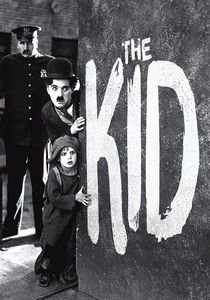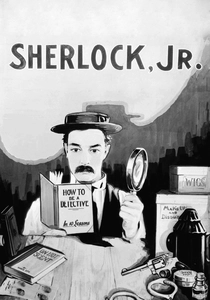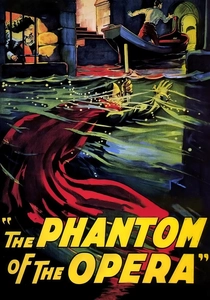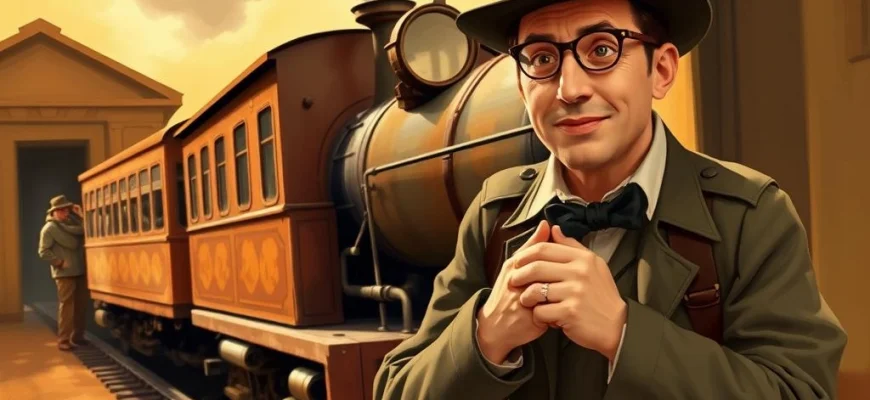If you loved the thrilling action and comedic brilliance of Buster Keaton's 1926 silent film masterpiece The General, you're in for a treat. This article explores 10 movies and shows that capture the same blend of daring stunts, clever humor, and timeless storytelling. Whether you're a fan of classic cinema or just discovering Keaton's genius, these picks will keep you entertained and engaged.

The Cabinet of Dr. Caligari (1920)
Description: A pioneering work of German Expressionist cinema with distorted sets and a nightmarish visual style, exploring themes of madness and authority.
Fact: The film's twist ending is considered one of the first in cinema history. Its angular sets were inspired by contemporary expressionist paintings.
 Watch Now
Watch Now 
The Kid (1921)
Description: A silent comedy-drama blending slapstick humor with heartfelt emotion, showcasing the struggles of the underclass in urban settings.
Fact: This was Charlie Chaplin's first full-length feature as a director. The child actor Jackie Coogan became cinema's first major child star because of this film.
 Watch Now
Watch Now 
Nosferatu (1922)
Description: An influential silent horror film with striking visual imagery and a haunting atmosphere, focusing on themes of fear and the supernatural.
Fact: The film was an unauthorized adaptation of Bram Stoker's Dracula, leading to a lawsuit that ordered all copies destroyed (though some survived).
 Watch Now
Watch Now 
Sherlock Jr. (1924)
Description: A technically innovative silent comedy featuring elaborate visual gags and dream sequences that push the boundaries of cinematic storytelling.
Fact: Buster Keaton performed all his own stunts, including one where he broke his neck but didn't realize it until years later. The film contains one of cinema's first examples of a character entering a movie screen.
 Watch Now
Watch Now 
Battleship Potemkin (1925)
Description: A revolutionary silent film known for its innovative montage editing and powerful political narrative about collective action.
Fact: The famous Odessa Steps sequence has been referenced and parodied countless times in other films. It was banned in many countries for its revolutionary content.
 Watch Now
Watch Now 
The Gold Rush (1925)
Description: A silent comedy-drama that combines physical humor with poignant moments, set against the backdrop of the harsh Alaskan wilderness.
Fact: The famous scene where Chaplin eats his shoe was inspired by actual accounts of starvation during the Klondike Gold Rush. It was Chaplin's personal favorite of his films.
 Watch Now
Watch Now 
Greed (1924)
Description: A naturalistic silent drama exploring the destructive power of money and ambition, featuring location shooting and psychological depth.
Fact: The original cut was over 7 hours long, but the studio cut it down to 2 hours against the director's wishes, destroying the excised footage. Some scenes were actually shot in Death Valley in 120°F heat.
 Watch Now
Watch Now 
The Phantom of the Opera (1925)
Description: A lavish silent horror film featuring elaborate sets and dramatic lighting, telling a tragic story of obsession and unrequited love.
Fact: Lon Chaney created his own makeup for the Phantom, which was so frightening that some audience members reportedly fainted during the unmasking scene.
 Watch Now
Watch Now 
Metropolis (1927)
Description: A visually stunning silent film that explores themes of industrialization and class struggle, featuring groundbreaking special effects and set designs.
Fact: The film's futuristic cityscape was inspired by the director's first view of the New York City skyline. It was the most expensive silent film ever made at the time.
 Watch Now
Watch Now 
Sunrise: A Song of Two Humans (1927)
Description: A visually poetic silent film that blends realism with expressionistic techniques, telling an emotional story of love and redemption.
Fact: It was the first American film to win the Academy Award for Unique and Artistic Production at the very first Oscars ceremony.
 Watch Now
Watch Now 








